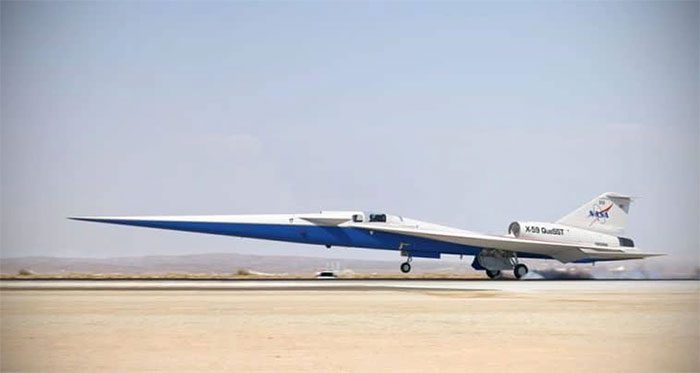The X-59 Quest is a supersonic aircraft developed by NASA in collaboration with Lockheed Martin, capable of reaching speeds of 1,489 km/h.
The primary goal of the project is to design an aircraft that can break the sound barrier without producing the characteristic sonic boom, often described as thunder or “sonic boom”. This explosion is caused by a supersonic object traveling through the air.
The official public unveiling is set for January 12.

X-59 Quest aircraft on the runway. (Image credit: Science Post).
Silent Supersonic Aircraft
Conventional supersonic aircraft create a phenomenon known as “shock waves” when they break the sound barrier.
This noise is considered disruptive on the ground, thus limiting the areas where such flights can occur.
The X-59 Quest aims to minimize sonic booms, reducing noise pollution associated with supersonic flights. This could pave the way for broader use of this technology in populated areas.
Lockheed Martin, renowned for its advancements in aerospace and aviation, has been selected as the primary partner to design and manufacture the aircraft.
The public introduction of the X-59 Quest, scheduled for January 12, will allow the public to admire this remarkable aircraft.
High Aerodynamic Design
The X-59 has an overall length of 30 meters and a wingspan of 9 meters. It features a uniquely designed pointed nose that is 11.5 meters long. This design helps shape the shock waves generated during flight.
Pilots will not be able to see through the front windshield; instead, they will be assisted by a External Vision System (XVS) that combines a forward-facing camera, cockpit display, and image processing software to provide enhanced visual perspectives.
The engineers designed the X-59 to achieve a speed of Mach 1.4 (1,489 km/h) at an altitude of 16,764 meters. It will be powered by an engine manufactured by General Electric Aviation.
Once airborne, the aircraft will conduct a series of operations to collect data on how people on the ground perceive the quieter “sonic booms.”
This data is crucial as it will support applications for commercial supersonic flight approvals to regulatory agencies such as the Federal Aviation Administration (FAA).





















































